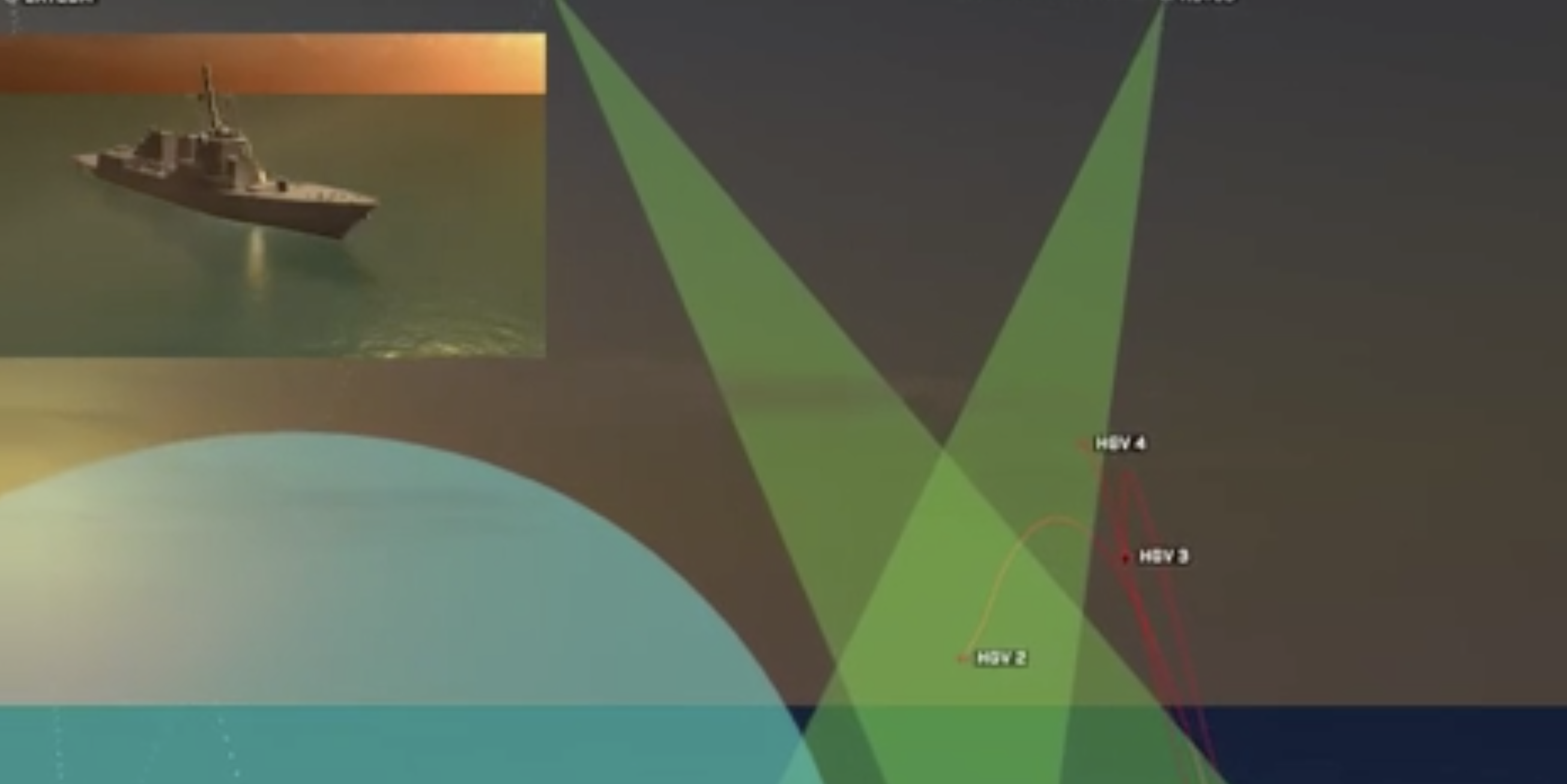
Millennium Space and Raytheon are developing space sensors for medium orbits could be added to the U.S. layered missile defense system
WASHINGTON — The U.S. Space Force last month selected Millennium Space Systems and Raytheon to design sensors that can track hypersonic missiles from medium Earth orbit.
If successful, sensors in medium orbits could become a new addition to the United States’ layered missile defense system that currently includes ground, sea-based and space sensors.
A multi-orbit network of space sensors that can detect and track both ballistic and hypersonic missiles is a goal now being pursued by the U.S. Space Force, the Defense Department’s Space Development Agency and Missile Defense Agency.
Some pieces of the network already are in place or in development.
The Space Based Infrared System (SBIRS) of geostationary missile warning satellites has been in operation for a decade. In addition, the Space Force is investing billions of dollars in a new constellation of Next-Generation Overhead Infrared (OPIR) geostationary and polar-orbiting satellites — made by Lockheed Martin and Northrop Grumman, respectively — to provide global early warning of missile launches.
The Space Development Agency (SDA) and Missile Defense Agency (MDA) are developing sensor satellites closer to Earth in low orbits to detect and track maneuvering hypersonic glide vehicles and other advanced weapons that could evade current early warning satellites, ship and ground-based radar sensors.
L3Harris and SpaceX are making wide-field-of-view missile tracking satellites for SDA. Northrop Grumman and L3Harris are working on medium-field-of-view tracking satellites for MDA. The MDA’s lower orbit tracking satellites would provide so-called “fire control” data needed to be able to target an interceptor weapon to shoot down the hypersonic missile.
The medium orbit sensors that Millennium Space and Raytheon will design over the next 18 months could eventually be added to the mix depending on how they perform in future tests.
The Space Force’s Space and Missile Systems Center decided to rely on digital designs for the initial studies before it commits to buying satellites. The models will “support U.S. Space Force architecture analysis by providing realistic cost, schedule, and performance predictions, essentially enabling a digital ‘try it before you buy it’ approach,” SMC said in a statement.
After evaluating the digital prototypes, the Space Force could recommend trades in the architecture. For example, it could suggest replacing geostationary or low Earth orbit satellites with sensors in medium orbits.
Millennium Space, which is owned by Boeing, and Raytheon are working under cost-sharing contracts awarded by SMC’s Space Enterprise Consortium. The contracts are for digital payload designs but include options for SMC to buy up to three actual satellites if the prototypes pass their design reviews.
Jason Kim, CEO of Millennium Space, said the company is taking advantage of Boeing’s expertise in digital engineering to develop the missile tracking prototype sensors.
“It’s important that we have digital models to help SMC and the broader community evaluate next-generation OPIR sensors and integrate them with weapons systems,” Kim said in an interview.
With sensors in multiple orbits, the Space Force could make trades based on what provides the most capability for the cost, he said.
Compared to sensors in geostationary satellites, sensors in medium orbits provide better sensitivity, he said. And they can track a wider area than satellites in low Earth orbit. “You see a larger swath of the Earth, the horizon does’t get in the way as in low Earth orbit,” Kim said. “With fewer numbers of satellites you’re able to track ballistic and hypersonic missiles.”
“It’s about having a robust architecture. MEO gives you added resiliency,” he said.
Rob Aalseth, Raytheon’s mission area director for missile warning, said having digital missile tracking prototypes will help the Space Force demonstrate a new approach to buying sensors and satellites.
“This is a demonstration to provide a digital twin,” Aalseth told SpaceNews. “It will help the Space Force deliver a digital engineering environment and give them detailed real models they can work with.”
In a digital missile defense architecture, the Space Force will be able to see how warning satellites interact with tracking sensors, he explained. “It’s a very detailed digital twin so they can look at the architecture and how it works with other systems, and make trades in real time.”
“Missile warning satellites are the global eyes in the eyes, the bell ringers,” said Aalseth. The tracking satellites receive cues from the warning satellites and can monitor the target through all phases of flight, he said.
For hypersonic missile defense, it’s important to have global tracking from space and preferably at different altitudes, Aalseth added. “Radars on the ground are limited. In low Earth orbit, you need a large number of satellites, maybe hundreds. In medium Earth orbit with a smaller number of satellites you can get global coverage and more sensitivity to see objects.”
"network" - Google News
June 22, 2021 at 07:10AM
https://ift.tt/3j6ekY9
Space Force, DoD agencies planning multi-orbit sensor network to track hypersonic missiles - SpaceNews
"network" - Google News
https://ift.tt/2v9ojEM
Shoes Man Tutorial
Pos News Update
Meme Update
Korean Entertainment News
Japan News Update

No comments:
Post a Comment